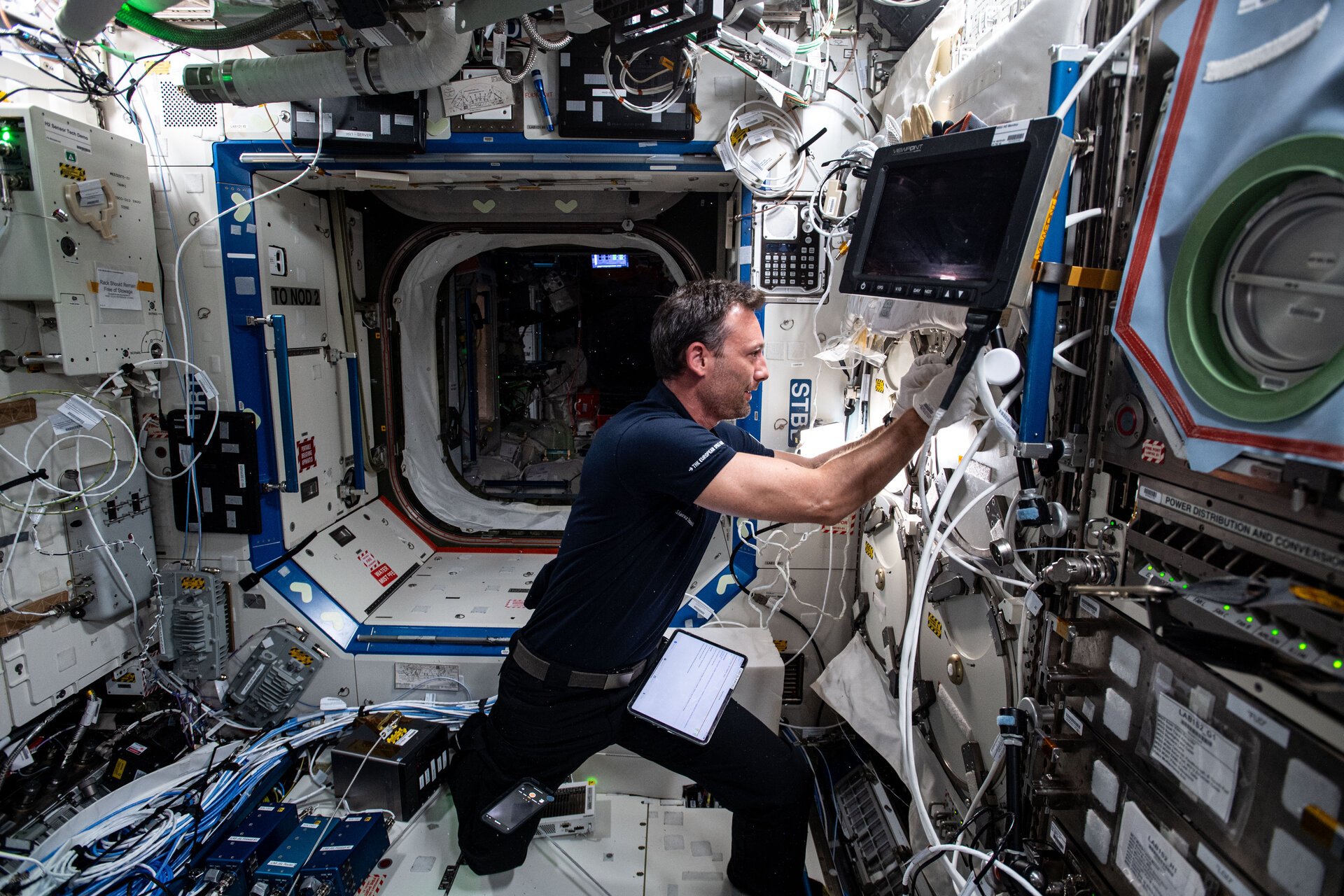16/07/2025
250 views
13 likes
In brief
What happens to the human body in space? It’s one of the most important questions scientists must answer as we prepare to send humans on longer missions to the Moon, Mars and beyond.
In-depth
In microgravity, our bodies behave very differently. Bones weaken, muscles shrink, the heart and blood vessels adapt in unexpected ways and even the immune system shifts. These changes can affect astronaut health and mission success, particularly during extended stays in space.
ESA’s research isn’t just about keeping astronauts safe. Studying the effects of spaceflight on the human body also offers unique insights into medical conditions on Earth, such as osteoporosis, muscle atrophy and cardiovascular disease. The knowledge gained in orbit has the potential to benefit everyone from ageing populations to patients recovering from injury or illness.
Central to this research is ESA’s SciSpacE programme, which brings together scientists from across Europe to explore how space stressors, like weightlessness, isolation and radiation, affect the human body. These investigations take place both on the International Space Station and in ground-based analogue studies, such as long-duration bedrest campaigns that mimic spaceflight conditions.
A number of European experiments were part of the Ignis mission on the International Space Station. These focused on key areas including bone health, cardiovascular function and muscle performance.
The Bone Health study is examining whether astronauts experience a particular kind of bone weakening after short-duration missions, known as Post Re-Entry Bone Loss (PREBL). By collecting bone scans, blood samples and activity data, researchers hope to better understand how the skeleton recovers after spaceflight.
Another experiment called Bone on ISS looks at long-term changes in bone structure in astronauts who have flown multiple times, using molecular markers to track how bones remodel in space. The goal is to develop a bone digital twin –a virtual model that can predict how an astronaut’s bones respond to the conditions of space, helping to customise future countermeasures.
ESA is also investigating the effects of spaceflight on the heart with the Cardio Deconditioning study. In microgravity, the heart may shrink and lose some of its capacity.
Scientists are using advanced imaging techniques and comparing data from space missions with Earth-based bedrest studies to understand how time in space and exposure to space radiation affects cardiovascular health.
To combat the challenge of muscle loss, ESA is testing neuromuscular electrical stimulation (NMES).This technique applies gentle electrical pulses to the leg muscles and could help maintain strength, endurance and muscle mass during flight.
The Muscle Stimulation experiment includes a full suite of assessments, from MRI scans and microcirculation analysis to blood sampling, to evaluate the effectiveness of NMES in space.
All of this research feeds into a bigger goal: to make human space exploration safer and more sustainable. But it also reflects the broader value of space science. By looking at the human body in space, ESA is uncovering new knowledge that can improve healthcare on Earth.
From bones and muscles to hearts and cells, the work being done aboard the Space Station is pushing the frontiers of science. It’s not only preparing us for life beyond Earth – it’s helping us live healthier lives right here at home.
